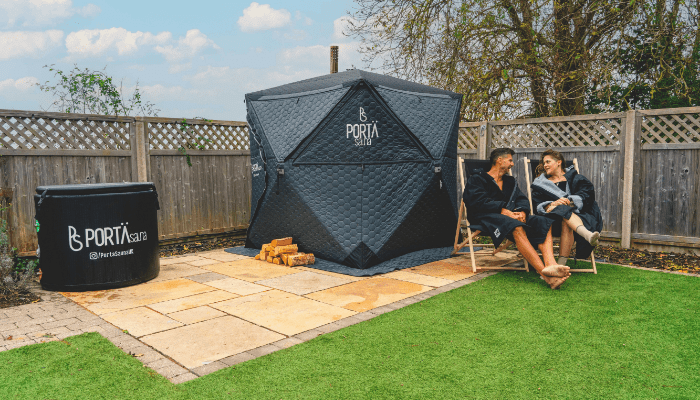Key Takeaways
- A butterfly garden is a full habitat with nectar plants, host plants, sun, water, and shelter for all butterfly life stages.
- Benefits: supports pollinators, boosts biodiversity, adds beauty, and is lower maintenance than a lawn.
- Choose a sunny, wind-sheltered location with a nearby puddling station or shallow water source.
- Include host plants (e.g., milkweed, parsley, fennel, dill) and nectar plants (e.g., coneflower, lantana, zinnias, asters).
- Use native plants and group them in clusters for better visibility and feeding efficiency.
- Add extras like flat rocks for basking, shrubs or grasses for cover, and avoid pesticides.
- Design with plant height layers, curved edges, and accessible observation spots.
- Maintain by watering in dry spells, deadheading, leaving stems/leaves for overwintering, and avoiding over-mulching.
- Avoid mistakes like planting only nectar flowers, using invasives, placing in too much shade, or keeping the space too tidy.
- Even small, themed gardens with balcony pots, children’s patches, or rain gardens can attract butterflies.
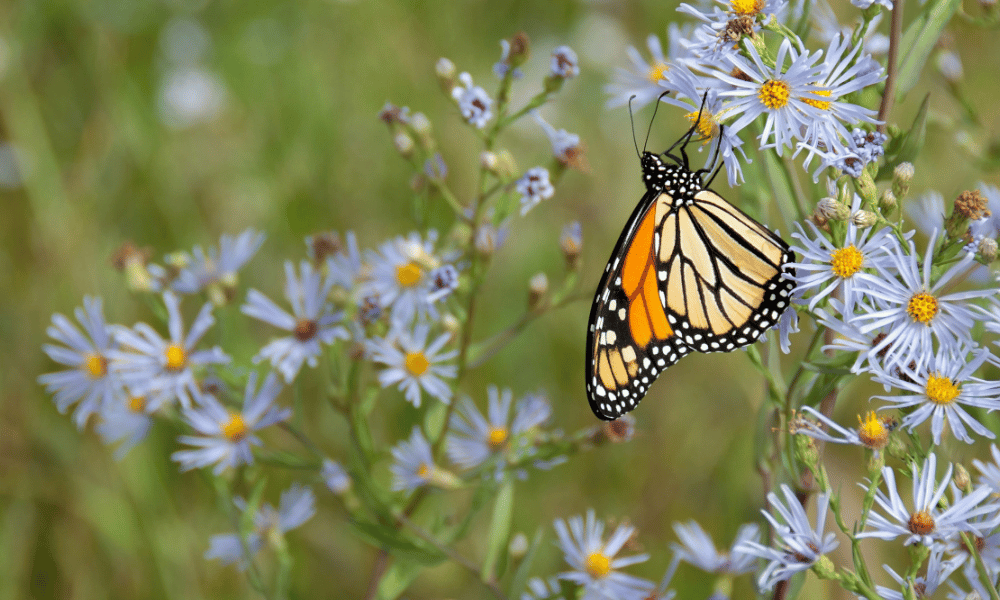
One in every three bites of food we eat depends on pollinators like butterflies. And no offense to honeybees, but butterflies win in the looks department. Easily.
Creating a butterfly garden isn’t just a whimsical backyard hobby. It’s a strategic move to support biodiversity, reduce pesticide dependence, and make your outdoor space look like a living painting.
But here’s the catch: a couple of petunias and a lawn gnome aren’t going to cut it. Butterflies are picky. They want sun. They want nectar. They want host plants for their babies and places to warm their wings and hide from the wind.
And if they don’t find what they’re looking for? They’ll ghost you.
This guide gives you everything you need to build a real butterfly habitat—not just a Pinterest project. From plant selection to layout tips, plus a few things most people forget (hint: puddles matter), you’ll get a space that’s both beautiful and functional.
Whether you’re designing a full landscape or just a sunny corner of your yard, let’s build something butterflies won’t want to leave.

What Is a Butterfly Garden?
A butterfly garden isn’t just a patch of flowers that looks pretty. It’s a full-service station for butterflies with a nursery, diner, sunbathing spot, and shelter, all rolled into one.
It’s intentionally designed to support every stage of a butterfly’s life cycle, from egg to fluttering adult. That means nectar-rich flowers, host plants for caterpillars, sunny spots for basking, and some rough edges (yes, wildness is good here).
Think of it as pollinator infrastructure, not just landscaping.
Why Build a Butterfly Garden?
Because the pollinators are in trouble. Monarch populations, for example, have dropped by more than 80% in recent decades. That’s not a “someone else’s problem” kind of stat, it’s an ecosystem red flag.
But here’s the good news: you can help fix it, right in your backyard.
Plus, butterfly gardens:
- Add movement, color, and life to your landscape.
- Boost nearby garden productivity by encouraging pollination.
- Provide a natural science lab for kids (and curious adults).
- Requires way less maintenance than a lawn.
You don’t need a farm. You just need to stop mowing a few square feet and plant smart.
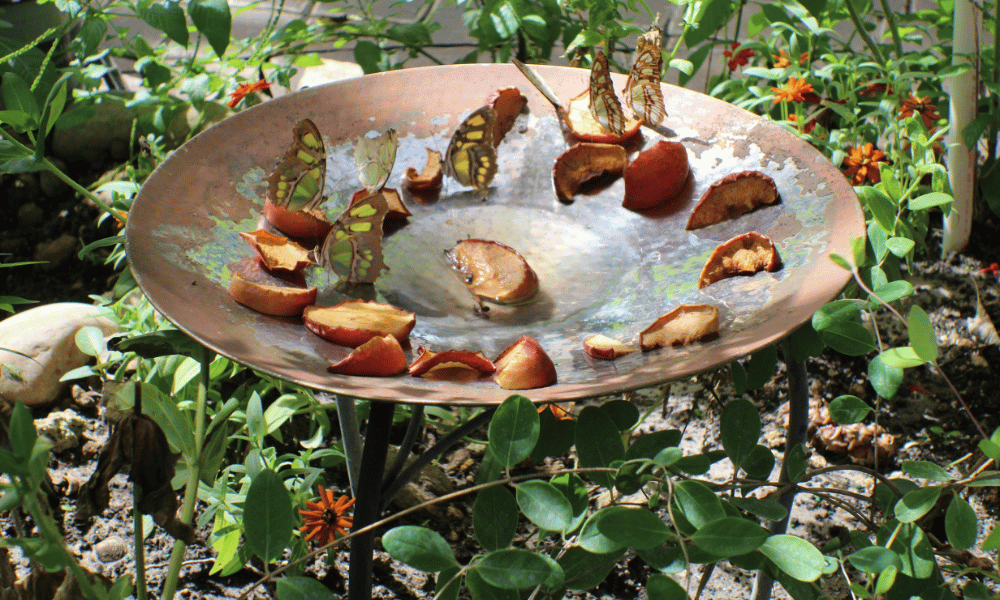
Choosing the Right Location
Butterflies are solar-powered. They want sun, six hours a day, minimum.
Pick a space that gets full sun, ideally shielded from strong winds. Open spaces near trees or shrubs work well; just don’t plant under heavy shade.
Paths nearby? Great. That means easier access for you, and fewer excuses not to maintain it.
Also: make sure there’s a water source nearby or a place to install a shallow puddle (more on that later). Butterflies don’t drink from birdbaths; they sip from mud.
Best Plants for a Butterfly Garden
Not all flowers are butterfly-friendly. If it’s hybridized to be pretty but sterile, your butterflies will starve while standing on it.
Here’s what they’re really after:
Host Plants for Caterpillars
If you skip these, you’re just offering a meal, not a home.
- Milkweed (Asclepias): Monarch caterpillars’ only food.
- Parsley, fennel, dill: Loved by swallowtail caterpillars.
- Hollyhock, violets, snapdragons: Hosts for various species depending on your region.
These get eaten. That’s the point. Let them be chewed.
Nectar Plants for Adult Butterflies
These are your showpieces, and your butterfly magnets.
- Coneflower (Echinacea)
- Lantana
- Black-eyed Susan
- Butterfly bush (Buddleia)
- Zinnias, asters, joe-pye weed
Pro tip: plant in clumps. Butterflies prefer patches over scattered singles.
Native Plants
Native plants are always better for local pollinators. They co-evolved with the butterflies in your region. Which means: more food, less fuss.
Check with your local extension office or native plant society for a tailored list. This one step improves your success rate tenfold.
Extra Features That Attract Butterflies
Want to take your butterfly garden from “cute” to “complete ecosystem”? Add these:
- Puddling Stations: Shallow dish, wet sand, a few flat rocks. Butterflies drink water and absorb minerals this way.
- Flat Rocks: Butterflies bask in the sun to warm up. Give them a landing pad.
- Dense Shrubs or Grasses: Offer shelter from predators and weather.
- Avoid Pesticides: Yes, even organic sprays. They’re often broad-spectrum and deadly to pollinators.
Add a log or let a corner stay wild. Butterflies aren’t into sterile perfection.
How to Design Your Butterfly Garden
Design matters. Butterflies aren’t browsing an art gallery, they’re hunting for fuel and real estate.
- Group same-species plants together in clusters. 3×3 minimum. It’s easier for butterflies to spot.
- Use curves and informal lines instead of rigid rows. Nature doesn’t do grids.
- Place tall plants in the back, mid-sized in the middle, and low-growers in front for access and visibility.
- Include a seating area or observation spot. Watching butterflies work is one of the few free shows worth your time.
If you’re into sketches, map out zones for host plants, nectar patches, and water sources. Otherwise? Start small and observe.
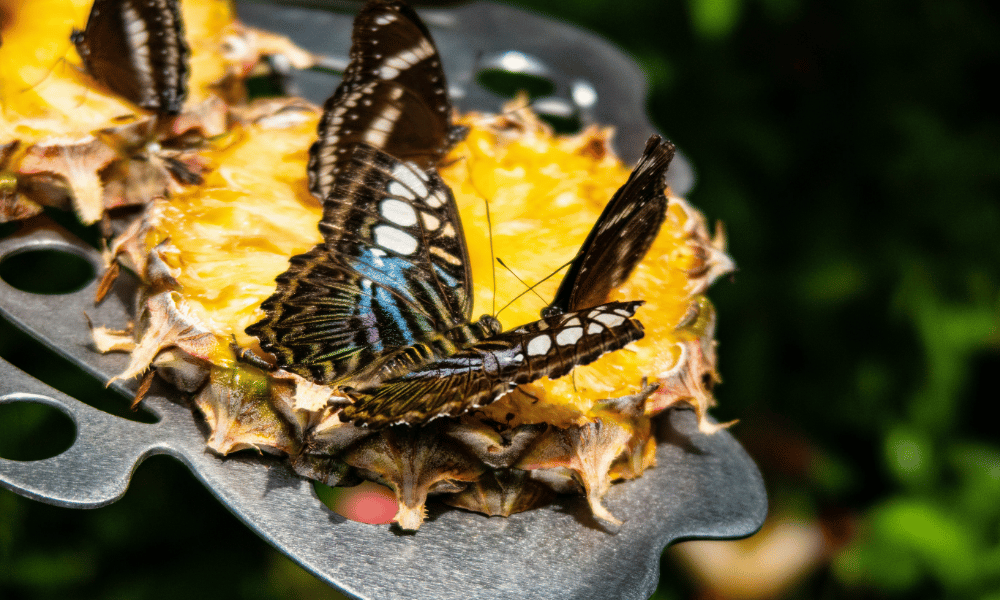
Maintenance Tips
Butterfly gardens don’t ask for much, but they do have needs.
- Water regularly during dry spells, especially for young plants.
- Deadhead flowers to promote more blooms.
- Avoid over-pruning. Seed heads and stems provide food and habitat.
- Leave some leaf litter in fall. It’s where eggs and chrysalises hide over winter.
Also: check for weeds, but don’t be too tidy. A perfectly manicured butterfly garden is probably failing.
Common Mistakes to Avoid
A few things to sidestep unless you want an empty garden:
- Planting only nectar flowers and forgetting host plants. No host = no caterpillars = no butterflies.
- Using non-native or invasive plants like tropical milkweed, which can harm monarchs in colder climates.
- Over-mulching. Butterfly larvae and pupae need access to soil or leaves.
- Putting it in too much shade. Butterflies want sun, not filtered light.
- Spraying for “pests.” You’re creating a habitat, not a museum display.
If it looks too neat, butterflies might assume it’s a trap.

Inspiring Butterfly Garden Ideas
Want to try something different? Here are a few themed takes:
- Mini Butterfly Garden for Small Spaces: Use pots on a balcony with nectar flowers and a shallow saucer for water.
- Children’s Pollinator Patch: Let kids grow host plants like parsley and watch caterpillars turn into butterflies.
- Wildlife Corridor: Connect your garden with native plantings along fences or between properties.
- Rain Garden + Butterfly Habitat: Combine drainage solutions with pollinator-friendly plants for double the impact.
- School or Community Garden: Design an educational butterfly space with signage, paths, and seasonal flowers.
Butterfly gardens don’t have to be massive. They just need to be intentional.
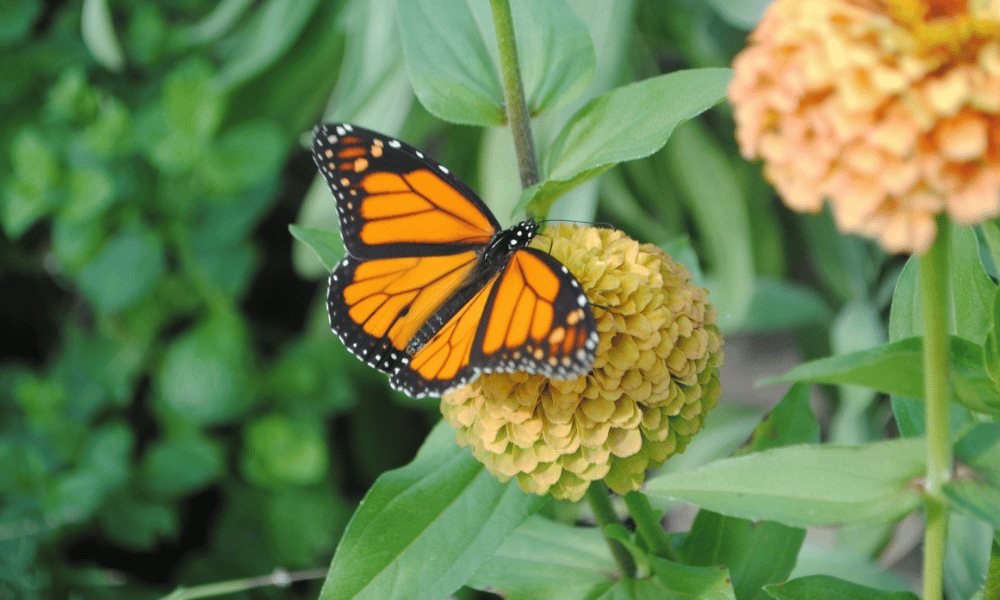
Seasonal Butterfly Garden Checklist
Stay ahead of the curve with a simple, seasonal rhythm:
Spring
- Clean up gently. Leave stems until nighttime temps stay above 50°F.
- Plant new host and nectar species.
- Refresh soil or mulch lightly, don’t smother emerging insects.
Summer
- Water deeply, especially in dry spells.
- Monitor bloom cycles and add flowers if needed.
- Watch for butterfly activity and document species (it’s addictive).
Fall
- Let seed heads remain for overwintering food and habitat.
- Plant late-season nectar sources like asters and goldenrod.
- Reduce clean-up, many butterfly species overwinter as chrysalises in dead plant matter.
Winter
- Do less. Really.
- Leave standing stems, brush piles, and leaf litter alone.
- Plan next year’s layout while sipping tea. It counts as gardening.
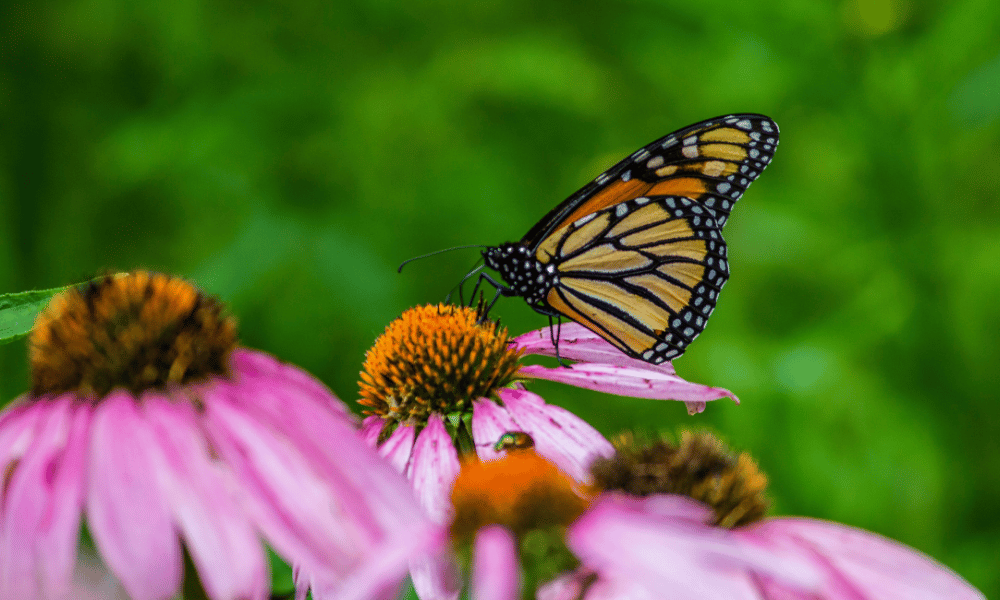
Conclusion
A butterfly garden is one of those rare things that’s both low maintenance and high reward.
Once established, it doesn’t need constant watering, clipping, or fussing. What it does need is intentionality. The right plants, in the right place, at the right time. Think of it as a carefully stocked buffet, not a random snack table.
You’re not just adding color to your yard. You’re building a habitat. A micro-ecosystem. A landing pad for pollinators that are disappearing faster than most people realize.
The best part? It feels good. Watching monarchs spiral around milkweed or seeing swallowtail caterpillars inch across parsley. It’s grounding, oddly satisfying, and yes, slightly addictive.
Start small if you need to. A few square feet of the right plants can make a difference.
Just skip the pesticides, trust the process, and give your garden some sunshine. The butterflies will find you.
Want your garden to actually support life, not just look alive?
At Oásis Biosistema, we design living landscapes that do more than decorate. Our pollinator-friendly gardens use native plants, natural systems, and smart design to turn lawns into thriving habitats that are beautiful for you, essential for butterflies.
FAQ
What is a butterfly garden called?
A butterfly garden is also called a pollinator garden, designed to attract butterflies, bees, and other beneficial insects.
What is the saying for butterfly garden?
A popular butterfly garden saying is “Plant it, and they will come,” reflecting how the right plants attract butterflies.
How many butterflies are there in Butterfly Garden?
Numbers vary by location, but many public butterfly gardens host hundreds to thousands of butterflies from dozens of species.
What are the disadvantages of butterfly bushes?
Butterfly bushes can be invasive, spread rapidly, and offer nectar without hosting caterpillar food plants, limiting their ecological benefit.


